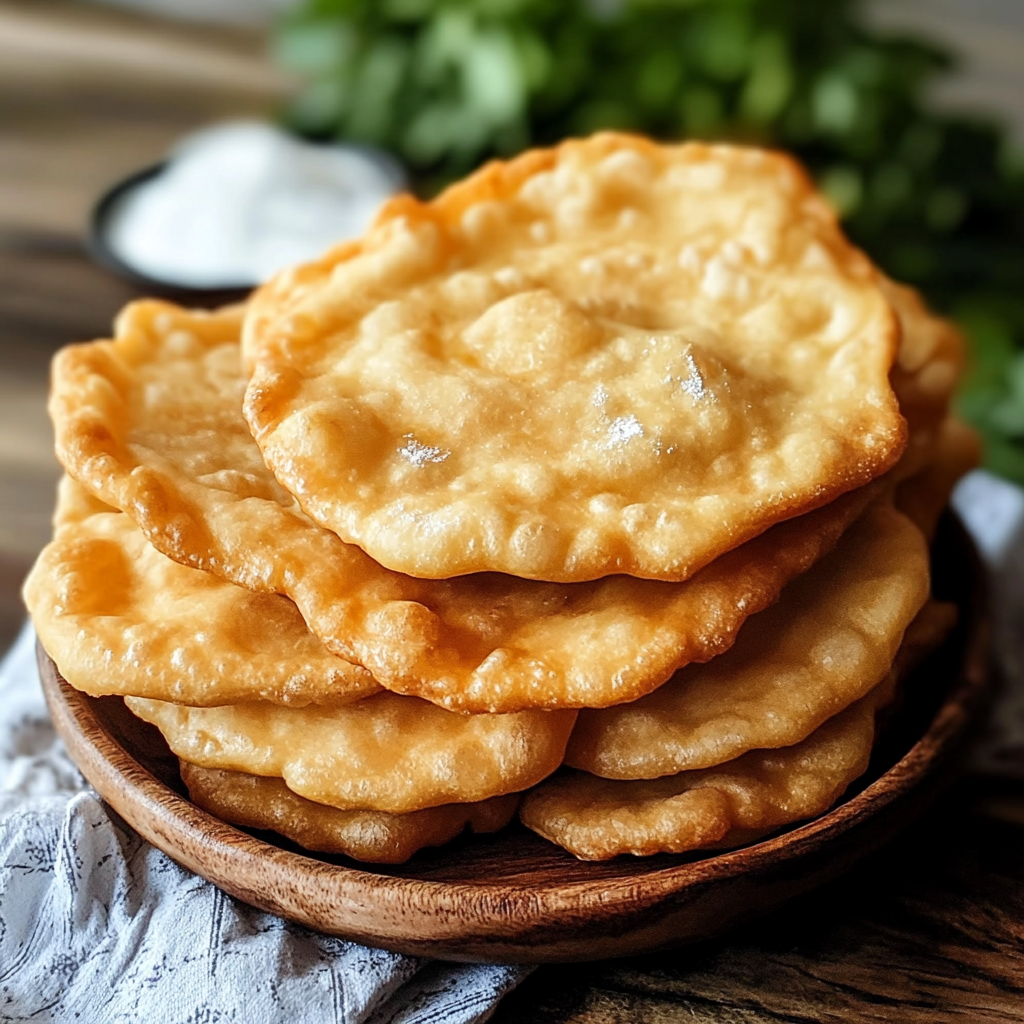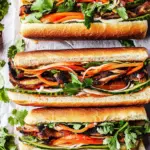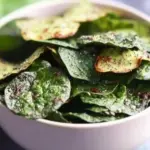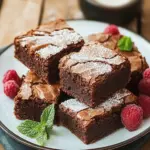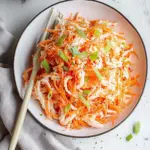The golden puffiness of Indian Frybread is something that has stood the test of time. Light, crispy edges meet a chewy center in a bread that’s been loved across generations, especially in Native American communities. Whether you serve it with spicy taco meat, beans, or a drizzle of sweet honey and powdered sugar, it’s always a hit.
This recipe uses simple pantry staples and no yeast, so it’s quick and easy to prepare. With its ability to complement both sweet and savory toppings, frybread is as adaptable as it is delicious. From cultural festivals to home kitchens, this classic dish delivers comfort with every bite.
Full Recipe
Ingredients:
-
2 cups all-purpose flour
-
1 tablespoon baking powder
-
1/2 teaspoon salt
-
3/4 cup warm water (more as needed)
-
Vegetable oil for frying
Directions:
-
In a large mixing bowl, combine the flour, baking powder, and salt. Mix well.
-
Gradually stir in the warm water, a little at a time, until a soft dough forms.
-
Turn the dough out onto a lightly floured surface and knead gently for about 3-5 minutes until smooth.
-
Cover the dough and let it rest for 30 minutes.
-
Divide the dough into 6 equal portions and roll each into a ball.
-
Flatten each ball with your hands or a rolling pin into a disk about 1/4-inch thick.
-
Heat about 1 inch of vegetable oil in a deep skillet over medium-high heat.
-
Once the oil is hot (about 350°F or 175°C), carefully place one piece of dough into the skillet.
-
Fry for about 1-2 minutes per side or until puffed up and golden brown.
-
Remove and drain on paper towels. Repeat with remaining dough.
-
Serve warm with savory toppings like taco fillings or sweet ones like honey and powdered sugar.
Prep Time: 10 minutes | Cooking Time: 20 minutes | Total Time: 30 minutes
Kcal: 230 kcal per frybread | Servings: 6
The Rich Heritage of Indian Frybread
Indian Frybread is more than just a simple fried dough—it’s a powerful symbol of resilience, culture, and history in Native American communities. The recipe itself is a product of survival, born from hardship during a dark chapter in U.S. history when Native tribes were forcibly removed from their homelands and given government-issued commodities like flour, lard, salt, and sugar. With limited access to traditional ingredients, Indigenous people adapted by creating frybread, a recipe that has since become a staple in Native kitchens across North America.
Over time, frybread has evolved into a dish deeply connected to identity and cultural pride. While it began as a necessity, it is now celebrated at powwows, family gatherings, and cultural events. Whether eaten plain, topped with honey and powdered sugar, or used as a base for “Indian Tacos,” it remains a beloved and versatile food.
Cultural Significance and Controversy
Though cherished in many Native households, frybread also stirs debate within the community. For some, it represents strength and cultural endurance—food made from scarcity turned into tradition. Others view it as a reminder of colonial oppression, forced displacement, and imposed dietary changes that have contributed to long-term health issues in Native populations.
Many modern Indigenous chefs and writers are reclaiming the narrative, using frybread as a conversation starter around food sovereignty, nutritional health, and the restoration of pre-colonial food practices. They argue that acknowledging frybread’s origin while also exploring native grains, vegetables, and cooking methods helps preserve and evolve Native cuisine in a meaningful way.
How Frybread is Used Today
In kitchens today, frybread is as adaptable as it is delicious. It serves as a canvas for creativity—savory or sweet. One of its most popular uses is as the base for Indian Tacos. These are typically topped with ground beef or bison, refried beans, lettuce, tomatoes, shredded cheese, and a dollop of sour cream. The bread acts like a thick, crispy tortilla, soaking in the flavors while remaining sturdy enough to hold all the toppings.
On the sweeter side, frybread can be enjoyed fresh out of the skillet with a drizzle of honey, a sprinkle of powdered sugar, or even fruit preserves. It’s a common fair and festival treat, offering both a sense of nostalgia and an indulgent snack to newcomers and longtime fans alike.
Additionally, variations have emerged in different Native communities. Some tribes might include ingredients like cornmeal, others might cook it over an open flame or bake it rather than fry it. The techniques and flavorings vary, but the communal importance of the dish remains constant.
Modern Takes and Health Considerations
As frybread gained mainstream popularity, health-conscious cooks began looking for ways to make it lighter or more nutritious. Since the original version is deep-fried, it’s relatively high in fat and calories. Some modern adaptations include air-frying, baking, or using whole wheat flour to increase fiber content.
Others experiment with adding chia seeds, flax meal, or ancient grains like amaranth or teff to introduce modern nutritional values while retaining the beloved texture and taste. While these variations aren’t always traditional, they reflect an evolving relationship with this iconic dish—one that balances cultural legacy with contemporary health goals.
Importantly, many Indigenous chefs advocate for a respectful and educated approach to cooking and sharing frybread. Acknowledging its cultural roots and the painful history that shaped it is essential, especially when it’s served outside Native communities.
Why Indian Frybread is So Loved
Part of the widespread appeal of Indian Frybread lies in its simple, comforting nature. The ingredients are basic and readily available, making it an easy recipe for anyone to try. Its crisp, golden exterior and soft, chewy interior are a sensory delight—especially when served warm. It has the rare ability to be deeply satisfying on its own or completely transformed based on what you serve with it.
From a culinary standpoint, its neutral flavor makes it the perfect vehicle for any number of combinations. It brings together elements of nostalgia, comfort, and flavor, which is why it continues to be a part of meals from the Southwest to the Pacific Northwest, and everywhere Native voices and recipes are celebrated.
For those looking to explore the flavors of Native American cuisine, frybread offers a gateway that is both inviting and profound. It’s a dish with a story, and making it in your kitchen means becoming a part of that story, honoring both its taste and its roots.
Frybread at Celebrations and Events
At community events, powwows, or family cookouts, frybread is often front and center. It’s not unusual to find large platters of frybread stacked high at tribal gatherings, served alongside stew, beans, or sweet toppings. The act of making frybread—rolling, frying, and flipping—is often a shared experience, bringing people together through tradition and care.
Its role in celebrations goes beyond just food; it’s part of ceremonial offerings, spiritual rituals, and generational bonding. Children learn how to make it from elders, and it becomes a thread that ties the past to the present in tangible, tasty ways.
Tips for the Perfect Frybread
While this article doesn’t focus on the recipe steps, there are a few key tips that make frybread exceptional. The dough should be soft but not sticky. Avoid overworking it, as that can make it tough. Letting it rest ensures a tender texture. The oil temperature is also crucial—too cool, and the bread absorbs excess oil; too hot, and it burns before cooking through.
Using your hands to flatten the dough instead of a rolling pin can give it a more rustic, traditional shape, and small dimples on the surface can help it cook more evenly. Also, frybread is best enjoyed fresh—straight from the pan to the plate.
Conclusion: The Living Legacy of Indian Frybread
Indian Frybread is more than just a dish—it’s a living piece of culture, carrying with it the weight of history, the power of adaptation, and the beauty of tradition. Though born from struggle, it has endured through love, family, and food. As more people discover and embrace this delicious bread, it’s essential to understand its background and respect its place in Native heritage.
Whether you serve it savory or sweet, plain or topped, in a traditional setting or at your own table, frybread connects people. It tells a story of survival and celebration, pain and pride, simplicity and richness. And in every bite, it offers a taste of something much deeper than just food—it offers history, community, and care.
By honoring where it comes from, experimenting with where it can go, and always respecting the people behind the tradition, you contribute to keeping its story alive in a meaningful and delicious way.

